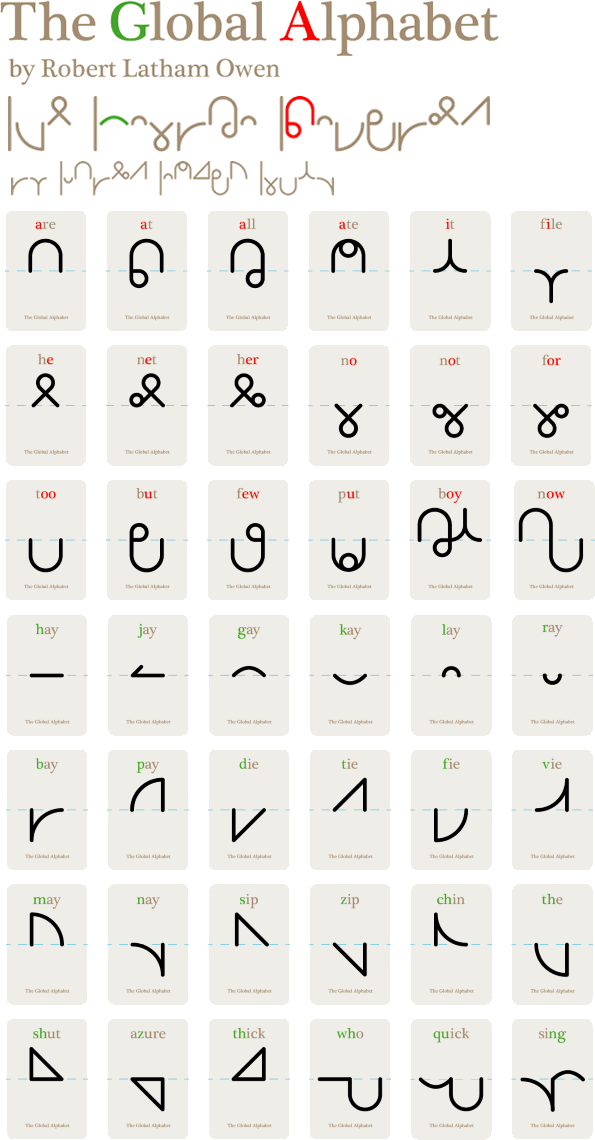Visiting the Omniglot website I came across Owen’s “Global Alphabet”. Owen was a US senator and an advocate of phonetic English. He created his own phonetic alphabet, which it is claimed that any known language can be represented.

Owen’s alphabet supposedly has 18 symbols for vowels, 18 for consonants and six for “compound consonants”.
The compound consonants are given here as ch, th, sh, wh, ng and zh. The chart above also has the “kw” sound of the English “qu” and the “dh” sound that “th” sometimes represents in English.
The first thing that strikes me about Owen’s alphabet is that some of the vowel symbols are quite intricate. Personally, I would be inclined to make the vowels and most used consonants as simple as practical. More similarity between related vowels could have been tried.
Glancing down the chart, several phonemes appear absent. Owen’s phonetic alphabet comes with several rules that must be learnt. The initial “y-” sound of English is represent for the symbol for /ai/ (“i” as in “file”) when it occurs at the start of a word in front of a vowel. The initial “w-” sound is represented by a “u” symbol where it occurs at the start of a word in front of a vowel.
It also took me some time to realize that “a” as in “ate” represented the sound /ei/ or ay/ey. Interestingly, on the Omniglot page “whale” is spelt with the symbols for “oo-ay-l/ uu-ey-l”.
Owen has distinct symbols for “ar”, “er” and “or” but not for other combinations of vowel with “r”. These symbols might be easier to learn if they looked like the parent vowel joined to the “r” symbol.
The absence of a symbol for “y” necessitates the creation of a symbol for the sound “yu” as in “few”.
Owen’s system distinguishes between near-close back rounded “u” /ʊ/as in “put”, “foot” and “wolf” and that of the open-mid back unrounded (/ʌ/) in “but”, “enough”, “other” or “up”. It also considers “a” as in “all” distinct from “or” as in “for”.
Owen’s Global Alphabet was an interesting attempt in the field. It provides some insight as to what phonemes a conlang will need. Replacing “-ew” with “yu” and omitting the “-r” vowels gives 15 vowels. There are eight consonant digraphs. With the addition of “w” and “y” there are 18 other consonants.